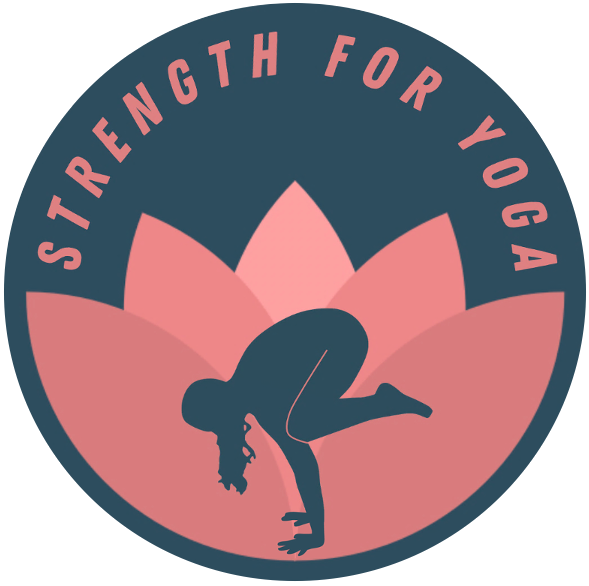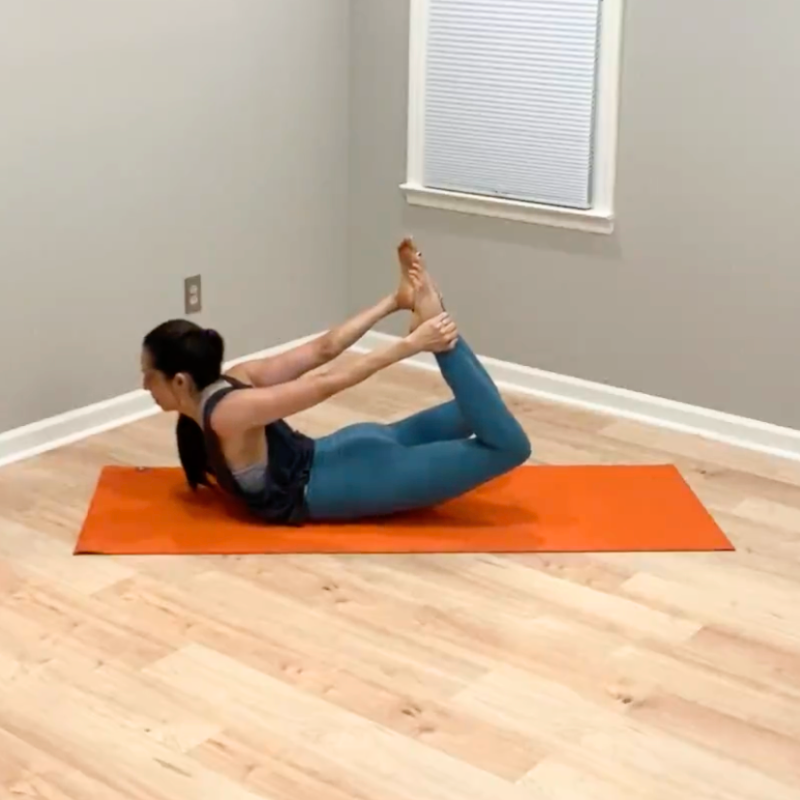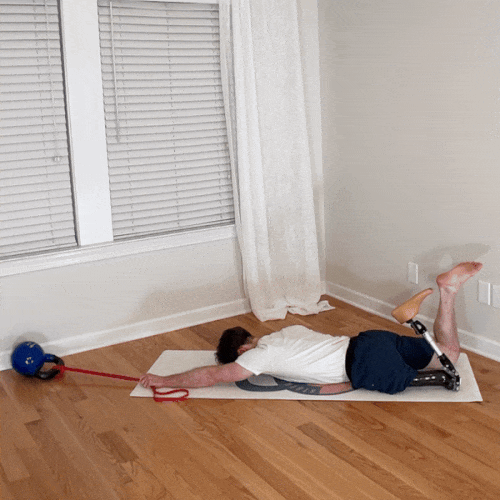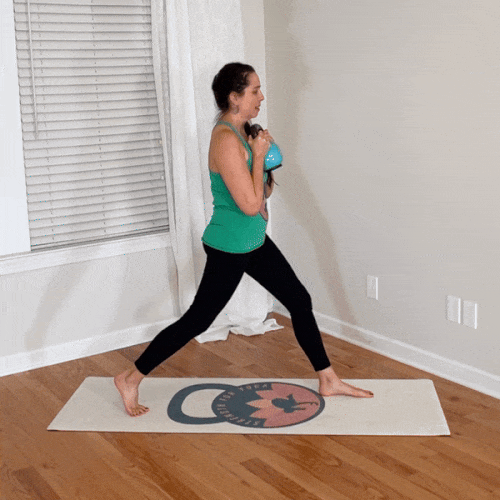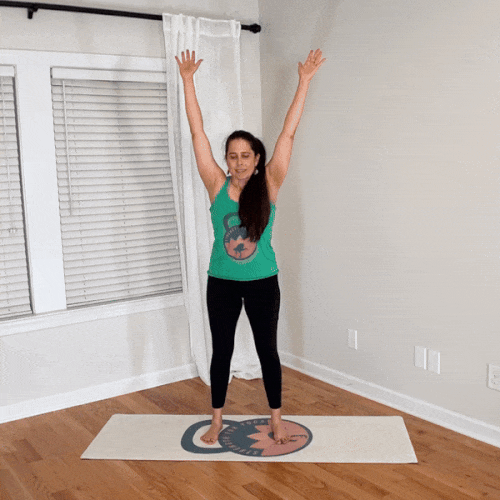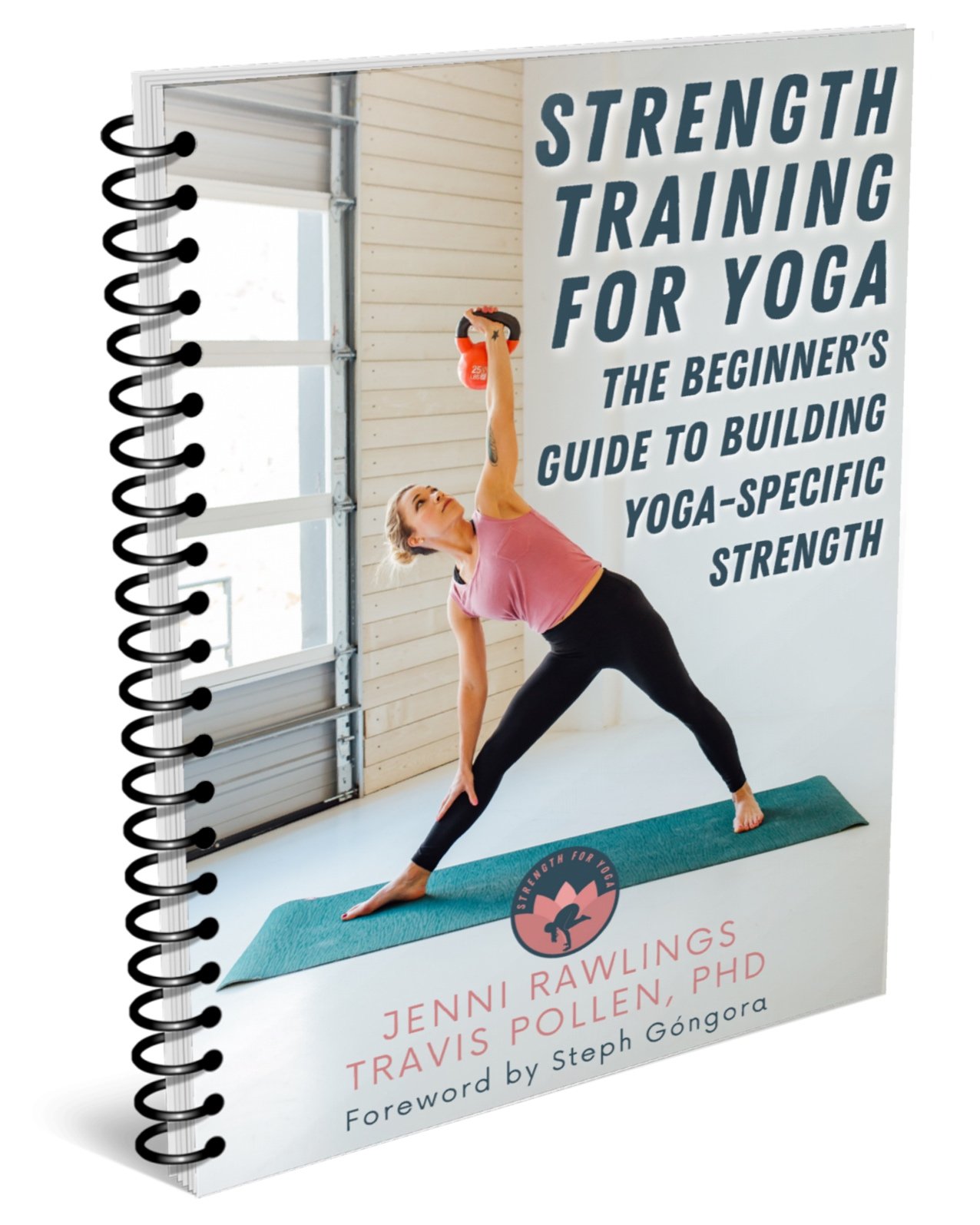The Biomechanics of Prone Backbends
Prone backbends are a family of yoga poses in which we backbend in a prone, or face-down, position.
Examples include
locust pose (shalabhasana)
bow pose (dhanurasana)
cobra pose (bhujangasana)
and upward facing dog (urdhva mukha svanasana).
Today we'll focus on two of these prone backbends – locust pose and bow pose – and analyze their biomechanical demands, Strength for Yoga style!
Let's start with looking at the biomechanics of locust pose:
Locust pose is a backbend that's completely driven by the posterior chain.
In this pose, we begin in a fully face-down position, and then we lift our head, chest, and legs up away from the floor.
To assume this position, the muscles of our entire posterior chain engage: our glutes, hamstrings, spinal extensors, and posterior shoulder muscles all work against gravity to create this backbend!
Let's contrast this with another common prone backbend, bow pose:
In bow pose, we backbend up away from the floor like we do in locust pose. But there's one important difference between these two asanas!
As we've discussed, in locust pose our entire posterior chain activates to lift us up away from the floor. But in bow pose, our posterior chain is hardly active at all!
This is because in bow pose, the backbend is created by clasping our hands onto our feet/ankles. This hand/foot connection effectively props our spine, shoulders, and hips up into the backbend passively.
In bow pose, the real star of the show is the anterior chain (not the posterior chain!).
After catching our feet with our hands, we kick our feet into our hands to lift up. This kicking action is isometric knee extension, which is performed by the quadriceps – the muscles on the front, or anterior aspect, of our thighs.
Hence, in bow pose, our posterior chain muscles are much less active than they are in locust pose because they don't have to work to hold us up! Rather, we're held in the backbend by that catch of our hands onto our feet and kick from our quadriceps.
Therefore, while locust pose and bow pose are similar in the sense that they're both prone backbends, they're different in terms of which muscle groups they target.
Locust pose is a posterior chain-driven backbend, while bow pose is an anterior chain-driven backbend.
Why does the difference matter?
If we want to be intentional about how we load our body in our yoga practice, it's important to understand the different biomechanical demands of locust and bow pose.
Additionally, if we're interested in building strength outside our yoga practice to support our yoga poses (as we do in our Strength for Yoga programs!), we should choose different strength exercises to support each of these prone backbends.
Below are a few exercise examples to demonstrate!
Strength exercises to support locust pose:
Single-Arm Crab Reach
Locust Pull-Down
The Single-Arm Crab Reach strengthens the posterior chain (mainly glutes and spinal extensors) in a neutral spinal position.
This increased posterior chain strength can carry over into supporting the posterior chain-driven locust pose!
The Locust Pull-Down also strengthens the posterior chain, but it's more upper body focused than the Single-Arm Crab Reach.
We target the lats (shoulder pulling muscles) with the pull-down here, and the active spinal extension is the same action we perform in locust pose!
Strength exercises to support bow pose:
The Goblet Knees Over Toes Split Squat strengthens the quads (front thigh muscles), which we use in bow pose!
Additionally, as our knee goes past our toes in this exercise, our pelvis also moves forward. This puts more of a stretch on our hip flexors of the back leg, which turns out to be very helpful mobility work for bow pose!
The Toe Touch Squat w/ Reach targets the quads, as well. Moreoever, reaching our arms up overhead in the bottom position loads our thoracic spine into extension, which helps our spinal mobility in bow pose (and also locust pose, for that matter!).
Want aN EXPERT guide to strength training to support yoga poses?
We cover the biomechanics of 18 foundational yoga asanas in our book, Strength Training for Yoga!
In this book, we analyze...
Which muscles do the main work in the yoga pose?
Which muscles support that main work?
Which muscles oppose the main work in the pose?
We then use this information to choose 48(!) strength exercises that support these 18 foundational yoga asanas.
These 48 exercises are divided up into two 4-week phases to create the strength training section of our book.
Learn about the biomechanics of yoga poses 🤓 AND build strength with us 💪 in our book, Strength Training for Yoga!
You Might Also Like…
